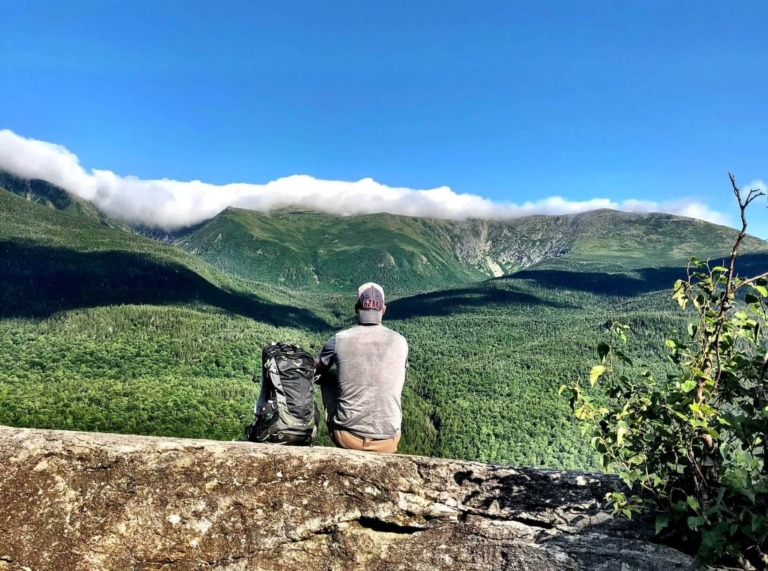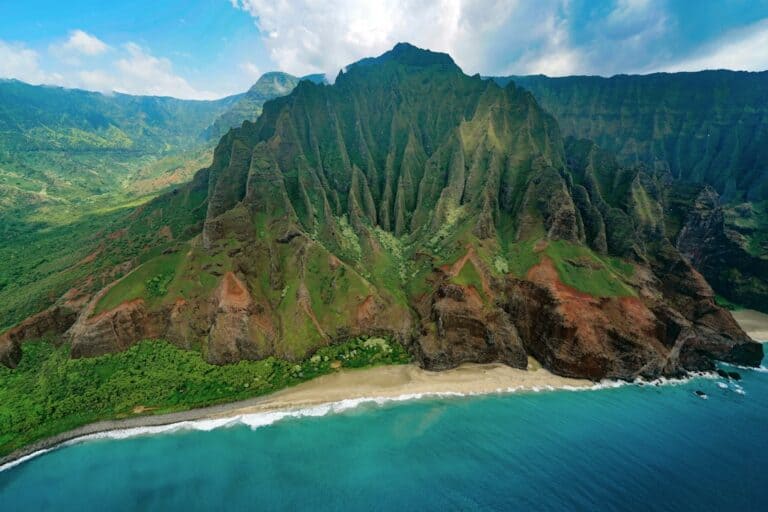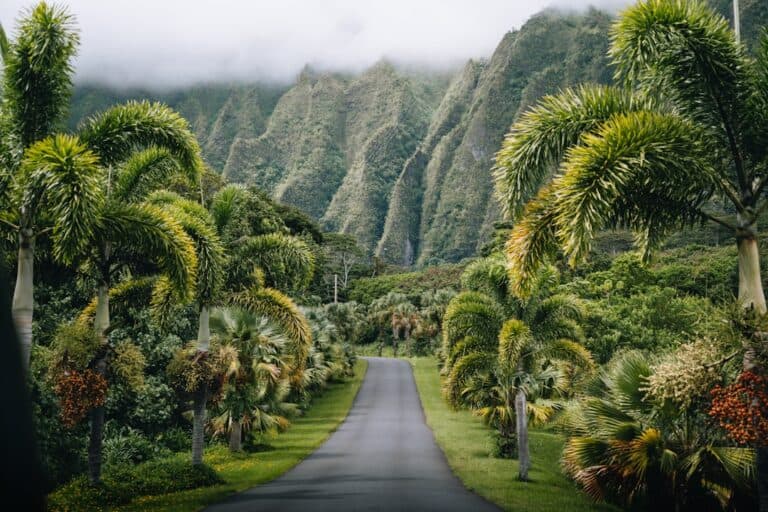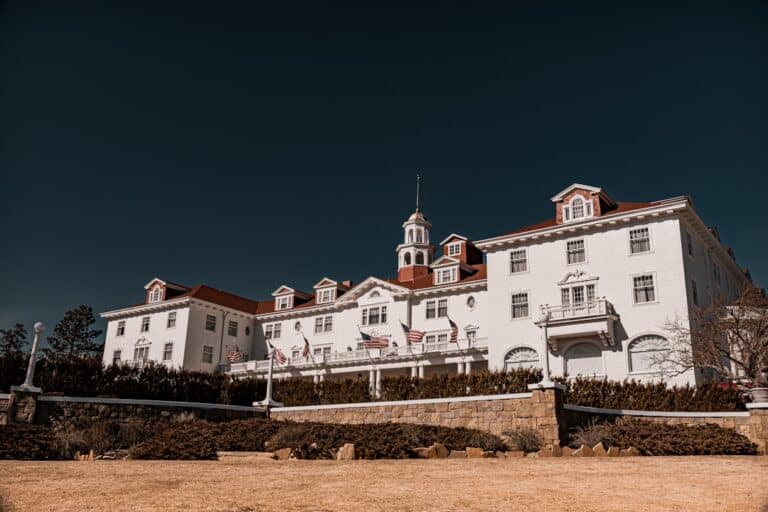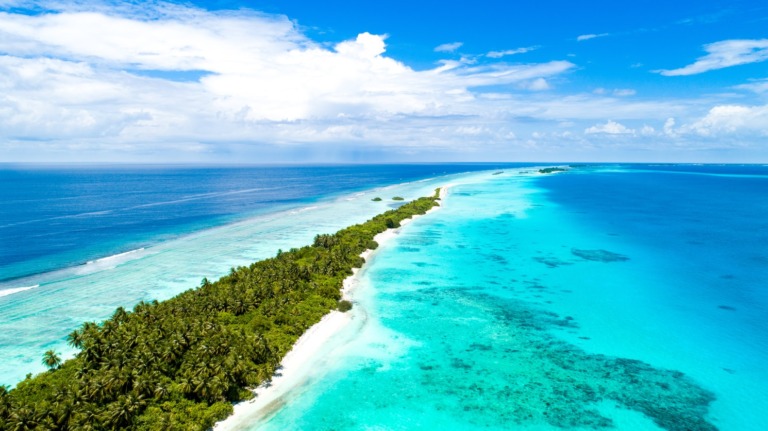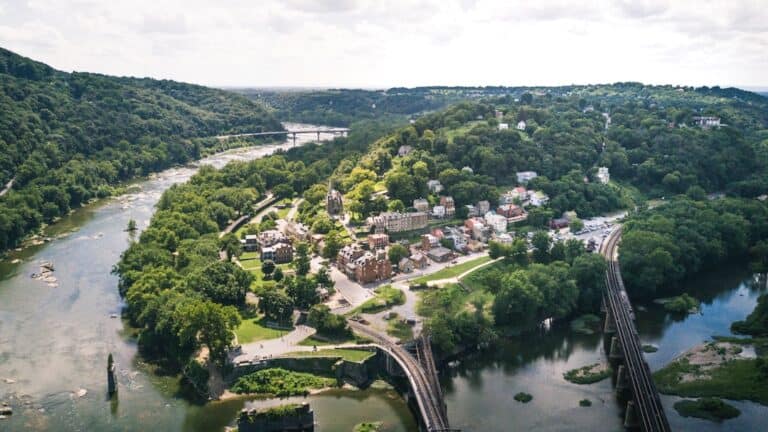Discover the 11 Best Places to Visit in Vietnam – Your Ultimate Guide to Incredible Destinations
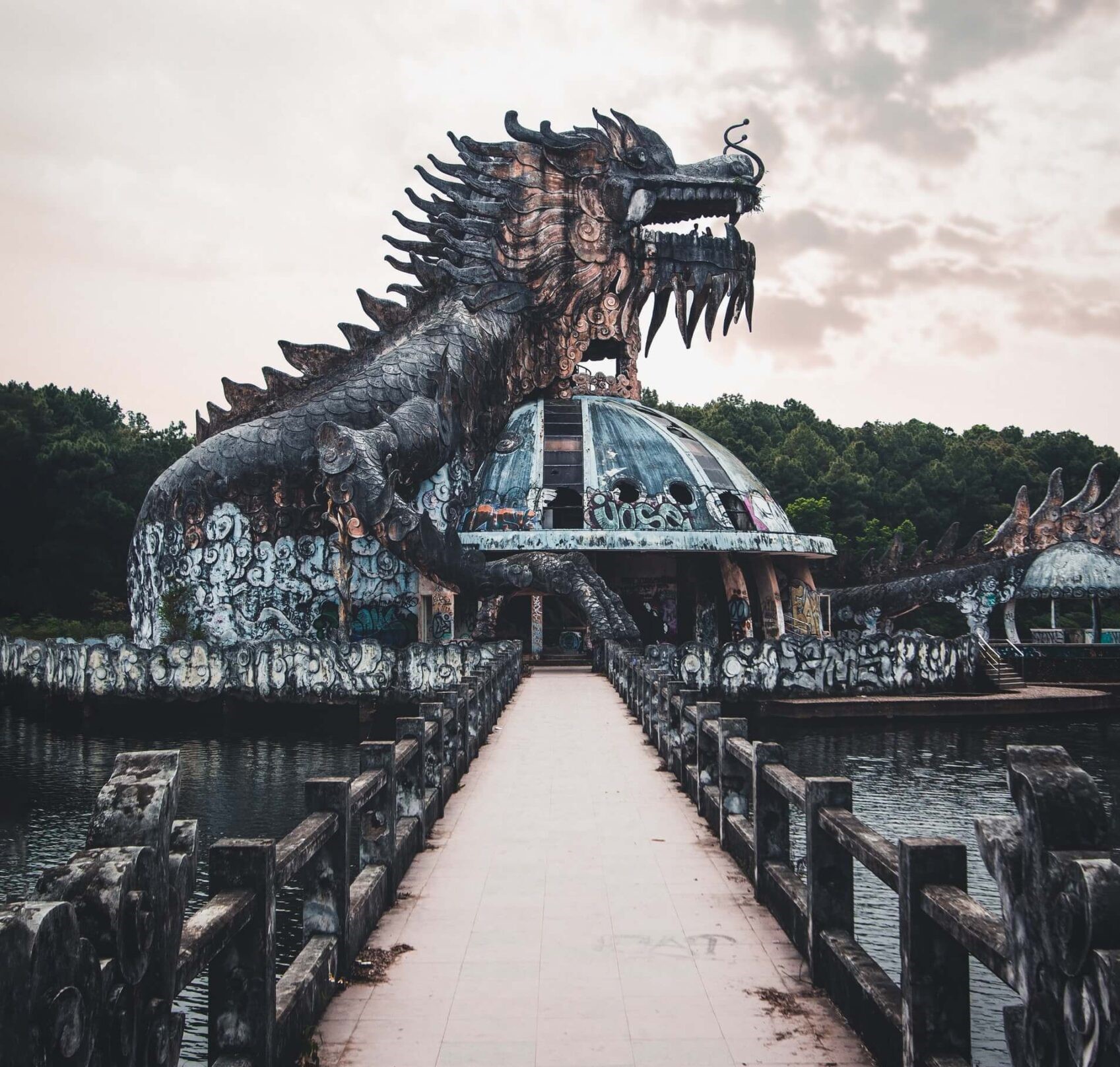
Welcome to the beautiful world of Vietnam, a country that invites you to explore its natural beauty, rich culture, and diverse range of destinations.
In Southeast Asia, Vietnam contrasts bustling cities, serene countryside, historic sites, and pristine beaches. In this guide, we will provide information on the 11 best places to visit in Vietnam, and help you plan your adventure in this captivating country.
Whether you’re an intrepid explorer or a laid-back traveler, Vietnam has something for everyone.
So, let’s journey through this remarkable nation and discover the top destinations that make Vietnam truly special.
Frequently Asked Questions (FAQ) About Vietnam

1. What’s the best time to visit Vietnam?
The ideal time to visit Vietnam depends on the region. In the north, the cool and dry season is from October to April, while the central region is most pleasant from February to August. The south is warm year-round, but the dry season from November to April is the most comfortable.
2. Do I need a visa to travel to Vietnam?
Many nationalities require a visa to enter Vietnam. However, there are exceptions for citizens of certain countries. It’s advisable to check the visa requirements before your trip and apply in advance if necessary.
3. Is it safe to eat street food in Vietnam?
Yes, street food in Vietnam is generally safe to eat. It’s a delightful way to experience local cuisine. Just choose busy food stalls, and ensure the food is cooked fresh and served hot.
4. What are the must-visit destinations in Vietnam?
Key destinations include Hanoi, Ho Chi Minh City, Halong Bay, Hoi An, Sapa, and the Mekong Delta. Each offers a unique blend of culture, history, and natural beauty.
5. How should I handle currency and payments in Vietnam?
The currency used in Vietnam is the Vietnamese Dong (VND). While credit cards are widely accepted in cities and major tourist areas, carrying some cash for smaller shops and street vendors is a good idea. Money exchange services are widely available.
6. What should I wear when visiting temples and pagodas?
When visiting religious sites, it’s respectful to dress modestly. Both men and women should cover their shoulders and knees. Carrying a scarf or shawl is handy for covering up when needed.
7. Is it safe to drink tap water in Vietnam?
It’s not recommended to drink tap water in Vietnam. Stick to bottled water, which is widely available. Ice served in drinks at reputable establishments is usually made from purified water.
8. Can I haggle when shopping in Vietnam?
Yes, haggling is common in Vietnam, especially in markets and smaller shops. Polite negotiation is expected, and it’s all part of the shopping experience. You can often get better deals by bargaining.
9. What is the language spoken in Vietnam?
The official language of Vietnam is Vietnamese. While English is not widely spoken in rural areas, you’ll find many people in urban and tourist areas who can communicate in basic English.
10. What is the local cuisine like in Vietnam?
Vietnamese cuisine is renowned for its fresh ingredients and bold flavors. Pho, spring rolls, banh mi, and bun cha are just a few of the delicious dishes to try. Street food stalls offer a wide variety of culinary delights.
A Brief History of Vietnam:

Vietnam has a rich history that is characterized by its resilience, determination, and strong sense of identity.
The country has faced foreign rule and conflict for many centuries, with China’s domination and French colonization being notable examples.
However, despite the long and arduous struggle for independence, the Vietnamese people have always remained unbroken in their spirit.
Their fight for sovereignty culminated in establishing the Democratic Republic of Vietnam in 1945.
The USA and Vietnam: A Complex Relationship:
Do you know what’s fascinating about Vietnam?
It’s the historical relationship the country shares with the USA, which has played a crucial role in shaping Vietnam’s identity.
We’re talking about the Vietnam War, which was a turning point in the nation’s history and had a significant impact on millions of lives.
But you know what’s incredible?
Vietnam has moved beyond that tumultuous past and is now on a new trajectory of growth, development, and openness to the world.
So, if you want to understand the Vietnamese people’s resilience and strength and appreciate the country’s strides, it’s essential to know this history.
Trust me; it’s worth it! And once you’re done exploring the country’s past, you’re in for a treat- Vietnam is full of incredible places just waiting to be discovered!
Top Destinations in Northern Vietnam
Northern Vietnam is the place to be if you’re looking for a trip full of culture, nature, and adventure. This region has everything from the bustling city of Hanoi to the mystical Halong Bay and the mesmerizing Phong Nha-Ke Bang National Park.
You’ll find yourself surrounded by breathtaking landscapes, timeless traditions, and a blend of old and new.
Whether you’re into history, food, or nature, there’s something for everyone.
So come along and join us on this journey as we explore the allure of Northern Vietnam’s most iconic destinations.
1. Hanoi

Are you planning a trip to Vietnam anytime soon? Then you cannot miss visiting the captivating city of Hanoi!
This city perfectly blends the old and the new, with its narrow streets dating back to the 13th century, well-preserved colonial architecture, and modern-day attractions.
The Old Quarter of Hanoi is a labyrinth of narrow streets that are a delight to explore.
Here, you can experience the traditional markets, sample mouth-watering street food, and admire the unique architecture.
The bustling markets like Dong Xuan Market and the historic St. Joseph’s Cathedral are some of the places you should visit.
If you are interested in the history of Vietnam, then you should visit the Ho Chi Minh Mausoleum, dedicated to the founding father of the nation, or explore the Temple of Literature,
Vietnam’s first national university. The Hoa Lo Prison Museum, also known as the “Hanoi Hilton,” provides a glimpse into the past and is a must-visit for history buffs.
Looking for something unique? The Water Puppet Theater is one of the most unique attractions in Hanoi where you can watch traditional Vietnamese water puppetry in action.
Originating in the Red River Delta, this art form offers a delightful and culturally enriching experience.
Now that you know about the best attractions in Hanoi, let’s talk about the best time to visit.
The ideal time to explore Hanoi is during the spring and autumn months, from February to April and September to November.
During these periods, the weather is mild, with pleasant temperatures and lower humidity, making it comfortable for walking and exploring the city’s many attractions.
However, if you prefer less crowded conditions, consider traveling during the shoulder seasons, just before or after the peak tourist months.
Keep in mind that Hanoi experiences a distinct four-season climate. Winters (December to January) can be chilly, and summers (May to August) tend to be hot and humid.
In conclusion, Hanoi is a city that combines history, culture, and modernity, making it a must-visit destination in Vietnam.
Plan your trip accordingly, and get ready to experience the best of Vietnam’s capital city.
2. Halong Bay

Halong Bay, known as the legendary “Bay of Descending Dragons,” is an absolute marvel of nature.
Recognized as a UNESCO World Heritage Site, it boasts landscapes that seem plucked from a dream.
Picture innumerable limestone karsts and islets emerging from the emerald waters of the Gulf of Tonkin, crafting a vista that’s beyond words.
These soaring limestone pillars, etched by millions of years of geological artistry, often cloak themselves in mist, casting an air of enchantment over the bay.
Geological Masterpiece:
- The bay’s unique topography, adorned with caves, grottoes, and hidden lagoons, invites exploration.
- Its singular structure is a living testament to nature’s force and the nuanced passage of time, rendering Halong Bay one of Vietnam’s most spectacular natural wonders.
Adventurous Pursuits:
- Visitors are spoiled for choice with a gamut of activities to savor this captivating setting.
- Cruising aboard traditional wooden junks is a non-negotiable experience.
- These excursions often offer opportunities for kayaking and swimming, providing an up-close encounter with the towering karsts.
- The allure of paddling through crystal-clear waters encircled by these majestic formations is truly magical.
Enthralling Night Adventures:
- Fishing enthusiasts can dive into the singular thrill of squid fishing during night cruises, offering a unique and thrilling experience.
- Rock climbing enthusiasts will find a haven here, as diverse routes cater to climbers of all proficiency levels.
- For those seeking solace, the bay welcomes you to simply sit back, relax, and bask in its tranquil beauty.
Cave Explorations:
- Delve into the various caves, such as Sung Sot Cave (Surprise Cave) and Thien Cung Cave, and behold the astonishing stalactites and stalagmites formations.
- Each cave is a treasury of unique charm and historical intrigue.
Halong Bay transcends being merely a destination; it’s a voyage into natural splendor and thrilling adventures.
Whether you crave serene tranquility or adrenaline-pumping activities, this iconic bay stands ready to deliver, solidifying its position as one of Vietnam’s most alluring and engaging destinations.
3. Phong Nha-Ke Bang National Park

Hidden away in the Northern part of Vietnam lies the breathtaking Phong Nha-Ke Bang National Park – a true paradise for nature enthusiasts and adventurers alike.
This vast park boasts a mesmerizing karst landscape, dense tropical forests, and intricate cave systems that are sure to leave you spellbound
The park is not just a feast for the eyes – it’s also a haven for hikers, offering many trekking opportunities with lush jungles and stunning viewpoints to explore.
The limestone karsts that dominate the skyline are awe-inspiring, especially during sunrise and sunset.
But the real treasures of Phong Nha-Ke Bang National Park are hidden beneath the surface.
With over 300 caves and grottoes, including the famous Son Doong Cave – the largest cave in the world, this park is a true wonderland for cave explorers.
And let’s not forget about the Phong Nha Cave, an underground river cave with spectacular stalactites and a unique, subterranean beauty.
The park’s biodiversity is equally impressive, with diverse flora and fauna that include endangered species.
It’s no wonder that Phong Nha-Ke Bang National Park is a UNESCO World Heritage Site, recognized for its outstanding geological and geomorphological values.
The impressive karst landscape and complex cave systems are truly a natural wonder and a testament to the Earth’s fascinating geological history.
Exploring this incredible park is an adventure into the heart of the Earth’s natural wonders.
It’s a place where you can witness the marvels of the natural world and understand why it’s a UNESCO World Heritage Site.
So don’t miss out on this unparalleled adventure in Vietnam – Phong Nha-Ke Bang National Park awaits you!
4. Bai Tu Long Bay
Nestled just northeast of the world-renowned Halong Bay, Bai Tu Long Bay is a hidden treasure that you simply can’t miss out on.
If you’re looking for a quieter, more serene atmosphere, this is the paradise you’ve been searching for.
The bay is just as breathtaking as its famous neighbor, with surreal limestone karsts jutting out of emerald waters as far as the eye can see.
However, the absence of the bustling tourist boats that fill Halong Bay sets Bai Tu Long Bay apart.
This lack of crowds creates a sense of calm and isolation, allowing you to connect with the beauty of nature that surrounds you fully.
Bai Tu Long Bay is famous for its pristine beaches perfect for sunbathing, swimming, and kayaking.
With the translucent waters, you can explore hidden caves and grottoes that will capture your imagination.
As the sun sets over the bay, it casts an enchanting glow on the limestone formations, providing the perfect backdrop for a picturesque and serene evening.
If you’re looking for a peaceful and untouched paradise, then Bai Tu Long Bay is the perfect place to escape from the hustle and bustle of everyday life.
So what are you waiting for? Come and experience the beauty of this hidden treasure for yourself!
Reasons to Visit Bai Tu Long Bay:
- Escape the Crowds: Bai Tu Long Bay is your ideal destination if you’re seeking the same beauty as Halong Bay but with fewer tourists. You can savor the tranquility and solitude of this natural wonder.
- Peaceful Beaches: Enjoy the soft, sandy beaches without the noise and commotion. Bai Tu Long Bay’s beaches are perfect for relaxation, swimming, and beachcombing.
- Exploration: Discover hidden caves and grottoes, kayak through calm waters, and hike on some of the smaller islands to uncover the bay’s natural secrets.
- Cultural Experiences: Visit local fishing villages to gain insight into the traditional way of life of the people who call this bay home. Interact with the local communities and learn about their customs and culture.
- Nature at Its Best: Bai Tu Long Bay offers a chance to immerse yourself in unspoiled nature. Watch the sunset over the tranquil waters and take in the serene beauty of this pristine paradise.
For those who appreciate the allure of natural beauty without the hustle and bustle, Bai Tu Long Bay is an oasis of serenity and splendor.
It’s a place where you can truly disconnect from the world and connect with the tranquil beauty of the bay.
Exploring Central Vietnam
Central Vietnam is a region that captivates with its diverse and rich cultural heritage, stunning coastlines, and a blend of historical and modern attractions. This central part of the country is a treasure trove for travelers looking to explore Vietnam’s history, cuisine, and breathtaking landscapes. From the charming old town of Hoi An to the mesmerizing caves of Phong Nha-Ke Bang National Park, Central Vietnam has a lot to offer. Join us as we journey through the cultural and natural wonders of this unique region.
5. Hoi An

Hoi An’s old town is a true gem of Vietnam, a place where history and culture come to life.
This UNESCO World Heritage Site is a well-preserved time capsule, showcasing a beautiful blend of Vietnamese, Chinese, Japanese, and European influences.
As you wander through the old town, you’ll be spellbound by the vibrant display of colorful lanterns that adorn the streets.
These lanterns are a sight to behold, especially at night, when they cast a warm and romantic glow over the town and the Thu Bon River.
The ancient town’s centuries-old buildings, wooden shop-houses, and quaint cafes create a magical atmosphere that transports you to a bygone era.
But there’s more to Hoi An’s old town than just its charming ambiance.
The town is also home to numerous temples, pagodas, and assembly halls, each with its unique history and significance.
Take a stroll through the town, and you’ll find yourself surrounded by ancient structures that tell stories of Vietnam’s past.
One of the standout attractions in the old town is the Japanese Covered Bridge, a symbol of Hoi An’s cultural heritage.
This picturesque bridge is a must-see spot, not just for its historical significance but also for its stunning architecture that seamlessly blends Japanese and Vietnamese styles.
In short, Hoi An’s old town is a place that will capture your heart and imagination.
It’s a place that will take you on a journey through time and space, and leave you with memories that will last a lifetime.
Activities for Tourists:
- Cultural Exploration: Explore the old town’s historical sites, including the Japanese Covered Bridge, Assembly Halls, and ancient temples. Each place offers a glimpse into the town’s rich cultural heritage.
- Culinary Delights: Hoi An is renowned for its delectable cuisine. Don’t miss the chance to savor local specialties, including Cao Lau and White Rose dumplings. Consider taking a cooking class to learn the art of Vietnamese cuisine.
- Bicycle Tours: Rent a bicycle and pedal through the tranquil countryside surrounding Hoi An. You’ll pass through scenic rice paddies, villages, and scenic landscapes.
- Lantern-Making Workshops: Participate in lantern-making workshops to create your colorful lantern as a keepsake of your visit.
- Relax by the River: The Thu Bon River offers a serene setting for a leisurely boat ride. You can also enjoy a riverside meal at one of the many restaurants.
- Tailoring and Shopping: Hoi An is famous for its tailor shops. You can have custom clothing made at a fraction of the cost you’d pay back home. Don’t forget to explore the local markets for unique souvenirs.
Hoi An’s old town is a place where the past and present coexist harmoniously.
It’s a destination that offers a glimpse into Vietnam’s history while providing ample opportunities for cultural exploration, culinary adventures, and serene relaxation.
The South of Vietnam
The southern region of Vietnam is a lively and dynamic part of the country, renowned for its bustling metropolis of Ho Chi Minh City, the tranquil charm of the Mekong Delta, and the cultural richness of its coastal towns.
This area of Vietnam offers an alluring blend of history, culture, and natural beauty, making it a captivating destination for travelers.
Join us as we explore the diverse attractions of the southern region and the unique experiences it has to offer.
6. Ho Chi Minh City

Ho Chi Minh City, formerly known as Saigon, is a bustling metropolis that serves as the economic and cultural heart of Vietnam.
The city’s vibrant atmosphere is a fusion of tradition and modernity.
Here are some of the key attractions that make Ho Chi Minh City a compelling destination:
- Ben Thanh Market: This iconic market is a treasure trove of local handicrafts, textiles, and street food. It’s a vibrant place to soak in the city’s energy.
- Notre-Dame Cathedral Basilica of Saigon: This stunning red-brick cathedral, built during the French colonial era, is a masterpiece of neo-Romanesque architecture.
- Independence Palace: Also known as Reunification Palace, this historic building played a significant role in the Vietnam War. Visitors can explore its preserved interiors.
- The Central Post Office: Designed by Gustave Eiffel, this architectural gem is both a functioning post office and a historical landmark.
- Cu Chi Tunnels: Located just outside the city, these intricate underground tunnels were used by the Viet Cong during the Vietnam War. Visitors can explore parts of the tunnel system.
- Saigon Opera House: This elegant French colonial-era building hosts cultural performances and is a symbol of the city’s appreciation for the arts.
War Remnants Museum
If you’re looking for an impactful and insightful experience in Ho Chi Minh City, the War Remnants Museum should be at the top of your list.
This museum offers visitors a sobering yet essential look into the Vietnam War and its aftermath, serving as a stark reminder of the physical and emotional toll it took on the Vietnamese people.
Inside the museum, you’ll find a collection of photographs, equipment, and artifacts that vividly depict the realities of the war.
One of the most poignant exhibitions is the collection of photographs that document the devastating impact of Agent Orange, a herbicide used during the war.
It’s a heart-wrenching look at the human cost of war.
While the museum can be emotionally challenging, it’s an incredibly powerful way to learn about the history of Vietnam and the resilience of its people.
The museum aims to educate visitors about the war’s consequences, promote peace, and remember those who suffered.
Ho Chi Minh City is a city of contrasts, where the past and present coexist in a vibrant and thriving metropolis.
Whether you’re exploring the bustling streets or taking in the historical sites, you’ll find a diverse range of experiences that celebrate the city’s rich culture and history.
So if you’re looking for an engaging and informative experience in Ho Chi Minh City, visiting the War Remnants Museum is a must. It’s a chance to learn, remember, and honor the people impacted by this devastating war.
7. Mekong Delta

The Mekong Delta is synonymous with vibrant and bustling floating markets that are an integral part of life in this region.
These markets are not just places to trade goods; they are cultural icons, offering an immersive experience that reflects the way of life along the Mekong River.
- Cai Rang Floating Market:
As one of the largest and most famous floating markets in the Mekong Delta, Cai Rang is a sight to behold.
Here, a myriad of boats and wooden sampans jostle for position as local vendors sell fresh produce, snacks, and even meals from their boats.
It’s a colorful spectacle that provides a unique glimpse into the delta’s daily commerce. - Phong Dien Floating Market:
Smaller in scale but equally enchanting, Phong Dien is a more traditional and less touristy market.
It’s an authentic experience where locals gather to buy and sell fruits, vegetables, and other products.
The early morning hours are the best time to witness the market at its liveliest.
Suggest a Day Trip:
A day trip to the Mekong Delta is an excellent way to explore this picturesque region without committing to an extended journey. Here’s a suggested day trip itinerary:
Morning:
- Depart from Ho Chi Minh City, and make your way to one of the delta’s gateway towns, like My Tho or Ben Tre.
- Arrive at a local village, where you can take a leisurely bicycle ride through orchards, rice fields, and lush countryside.
- Visit a local family to sample fresh tropical fruits, honey tea, and artisanal coconut candies.
Lunch:
- Enjoy a local lunch at a riverside restaurant, where you can savor regional delicacies.
Afternoon:
- Embark on a boat trip along the Mekong River to explore the floating markets. You’ll have the opportunity to see how locals conduct their trade and interact with the friendly vendors.
- Stop at a traditional handicraft village to witness the crafting of products like coconut candy, rice paper, and woven mats.
- Conclude your day with a relaxing sampan ride through the small canals and lush vegetation of the delta.
Evening:
- Return to Ho Chi Minh City in the evening, bringing with you memories of the Mekong’s tranquility and the vibrant atmosphere of its floating markets.
A day trip to the Mekong Delta provides a fascinating insight into the culture and commerce of this region, while allowing you to return to the comforts of Ho Chi Minh City in the evening. It’s an adventure that reveals the true essence of life along the Mekong.
Eastern and Southern Coast of Vietnam
Vietnam’s eastern and southern coast is a hidden gem that offers a perfect mix of sun, sea, sand, and culture.
This region has something for everyone with pristine beaches, bustling cities, and historical landmarks.
Take a stroll along the sandy shores of Nha Trang and Phu Quoc, where the turquoise waters and warm sun will leave you feeling rejuvenated.
The bustling city of Ho Chi Minh, formerly known as Saigon, is also a must-visit destination.
From its vibrant street markets to its colonial architecture, Ho Chi Minh is a hub of activity that tells the story of Vietnam’s past and present.
But that’s not all.
Vietnam’s eastern and southern coast is also home to many cultural treasures, including ancient temples, pagodas, and historical landmarks.
Whether you’re a history buff or just looking to immerse yourself in a new culture, this region won’t disappoint.
So pack your bags and get ready to explore the stunning and diverse region of Vietnam’s eastern and southern coast.
From its captivating coastal towns to its bustling cities, this region will leave you with memories that will last a lifetime.
8. Nha Trang

Nha Trang, located on the eastern coast of Vietnam, is a true coastal paradise.
Known for its breathtaking beaches and crystal-clear waters, it’s a must-visit destination for anyone looking for a tropical getaway.
With miles of pristine, sandy shores that seem to stretch on endlessly, you’ll find yourself in awe of the natural beauty that surrounds you.
One of the standout features of Nha Trang’s beaches is their picturesque quality.
With swaying palm trees that provide a gentle breeze, and the South China Sea extending as far as the eye can see, it’s easy to understand why this place has become a favorite destination for beach lovers.
Tran Phu Beach, the most famous of Nha Trang’s beaches, runs along Tran Phu Street, the city’s bustling waterfront promenade.
Here, you can unwind on the soft sands, dip in the crystal-clear waters, and soak up the warm Vietnamese sun.
If you’re looking for a comfortable and memorable beach experience, you’ll be glad to know that many beachfront resorts and restaurants offer beach loungers and parasols.
This means relaxing in the shade, sipping on a refreshing drink, while enjoying the stunning sea views.
What sets Nha Trang’s beaches apart is their gentle slope into the sea, which makes them ideal for swimming.
The calm waters and the absence of strong currents provide a safe environment for both seasoned swimmers and those looking to dip their toes in the sea.
Whether you’re an experienced swimmer or just starting, you’ll find the perfect spot to enjoy the tranquil waters.
In summary, Nha Trang’s stunning beaches, with their picturesque quality, gentle slopes into the sea, and calm waters, make it the perfect spot for a tropical getaway.
So why not plan your next vacation here and experience the beauty of this coastal gem for yourself?
Water-Based Activities:
Nha Trang’s beachfront location invites a plethora of water-based activities that cater to all preferences and levels of adventure. Here are some of the water activities to consider:
- Scuba Diving: Explore the vibrant underwater world with scuba diving tours. Nha Trang’s proximity to Hon Mun Marine Protected Area offers fantastic dive sites with colorful coral reefs and diverse marine life.
- Snorkeling: For a more leisurely exploration of the marine environment, snorkeling is a fantastic option. You can rent equipment right on the beach and immerse yourself in the underwater wonders.
- Island-Hopping Tours: Join island-hopping excursions to discover the surrounding islands, such as Hon Mun, Hon Tre, and Hon Tam. These trips often include stops for water sports, relaxation on secluded beaches, and delicious seafood feasts.
- Water Sports: Engage in various water sports like parasailing, jet skiing, and windsurfing, which are available for adventure seekers.
- Boat Tours: Take boat tours that offer a combination of relaxation, sightseeing, and snorkeling. Some tours even feature on-board entertainment and fresh seafood lunches.
- Fishing Trips: Enjoy a fishing trip with local fishermen, where you can learn their traditional fishing techniques and, if you’re lucky, catch your dinner.
Nha Trang’s beaches are idyllic for relaxation and offer a world of aquatic adventures.
Whether you seek tranquility by the sea or exhilarating water sports, Nha Trang has it all, making it a must-visit destination on the eastern coast of Vietnam.
9. Phu Quoc

Phu Quoc, also known as the “Pearl Island,” is a true tropical paradise located in the Gulf of Thailand.
As the largest island in Vietnam, it boasts a unique blend of Vietnamese and Cambodian cultural influences, making it an exciting destination for those seeking a tranquil escape amidst nature’s beauty.
Phu Quoc is home to pristine beaches, lush forests, and a plethora of captivating attractions that will leave you mesmerized.
Whether you want to relax on the beach, go snorkeling, explore the island’s history and culture, or simply indulge in some delicious seafood, Phu Quoc has something for everyone.
One of the island’s most popular attractions is the Phu Quoc National Park, which is home to an abundance of wildlife, including several endangered species.
The park also features scenic hiking trails, picturesque waterfalls, and stunning viewpoints that offer panoramic views of the island.
If you’re looking for a unique cultural experience, be sure to visit the Phu Quoc Night Market, where you can sample a variety of local delicacies and shop for souvenirs.
Additionally, the island is renowned for its production of high-quality fish sauce, which is a staple ingredient in Vietnamese cuisine.
Overall, Phu Quoc is a must-visit destination for anyone looking for a tropical paradise with a unique blend of culture, history, and natural beauty. will leave you mesmerized.
Whether you want to relax on the beach, go snorkeling, explore the island’s history and culture, or simply indulge in some delicious seafood, Phu Quoc has something for everyone.
One of the island’s most popular attractions is the Phu Quoc National Park, which is home to an abundance of wildlife, including several endangered species.
The park also features scenic hiking trails, picturesque waterfalls, and stunning viewpoints that offer panoramic views of the island.
If you’re looking for a unique cultural experience, be sure to visit the Phu Quoc Night Market, where you can sample a variety of local delicacies and shop for souvenirs.
Additionally, the island is renowned for its production of high-quality fish sauce, which is a staple ingredient in Vietnamese cuisine.
Overall, Phu Quoc is a must-visit destination for anyone looking for a tropical paradise with a unique blend of culture, history, and natural beauty.
Attractions on Phu Quoc:
- Beaches: Phu Quoc is renowned for its breathtaking beaches, each with its unique charm. Long Beach, Bai Sao, and Ong Lang Beach are some of the most popular. The fine white sand and crystal-clear waters make these shores perfect for relaxation and water activities.
- Phu Quoc National Park: Covering a significant portion of the island, this national park is a haven for nature enthusiasts. It offers trekking trails through lush forests, leading to freshwater streams and hidden waterfalls. The park is also home to diverse wildlife.
- Fish Sauce Factory: Learn about the island’s famous fish sauce at one of the local factories. Fish sauce is a vital ingredient in Vietnamese cuisine, and you can see the traditional production process up close.
- Pepper Farms: Phu Quoc is known for its high-quality pepper, and you can visit pepper farms to witness the cultivation of this prized spice. Pepper is one of the island’s most important exports.
- Duong Dong Market: The island’s main town, Duong Dong, features a bustling market where you can sample local street food, purchase fresh seafood, and find a variety of souvenirs.
- Coral Reefs: Phu Quoc’s waters are home to beautiful coral reefs, making it an excellent place for snorkeling and diving. The colorful marine life and vibrant coral formations are a treat for underwater enthusiasts.
Phu Quoc is a destination where you can unwind on stunning beaches, explore lush landscapes, and savor fresh seafood while immersing yourself in the local culture.
Its distinctive location in the Gulf of Thailand makes it a hidden gem worth discovering.
Exploring Northern and Northeastern Vietnam
The northern and northeastern regions of Vietnam are a captivating blend of majestic landscapes, rich history, and vibrant cultures.
This part of the country boasts dramatic mountain ranges, terraced rice fields, and the charming capital city of Hanoi.
As you venture into the northern and northeastern corners, you’ll encounter ethnic minorities, explore the ancient history of Vietnam, and be in awe of the stunning natural wonders.
Join us as we embark on a journey through the picturesque landscapes and cultural treasures of this region.
10. Sapa

Sapa is a hidden gem in the northernmost part of Vietnam that boasts unparalleled natural beauty and cultural richness.
This mountainous area is located at a high elevation, offering visitors a breathtaking landscape of mist-covered hills, terraced rice fields, and lush forests.
The Hoàng Liên Son mountain range, including the iconic Fansipan, the highest peak in Indochina, dominates the highlands of Sapa, providing a stunning backdrop for exploring the area.
One of the most striking features of Sapa is its cool, temperate climate and crisp mountain air, which provide a refreshing escape from the hustle and bustle of urban life.
As you trek through the highlands, you’ll be greeted by vibrant green fields, serene valleys, and cascading waterfalls at every turn.
The stunning vistas of terraced rice fields stretching as far as the eye can see are a testament to the centuries-old agricultural practices of the local ethnic minorities.
Sapa is a place where every bend in the road reveals another breathtaking panorama, and every village nestled in the mountains tells a unique story of the ethnic communities that call this place home.
From the Hmong and Dzao to the Tay and Giay, Sapa is a melting pot of cultures, each with their own customs, traditions, and way of life.
Whether you’re a nature lover, adventure seeker, or cultural enthusiast, Sapa has something for everyone.
So pack your bags, put on your hiking boots, and get ready for an unforgettable journey through one of Vietnam’s most spectacular regions.
Visiting Ethnic Villages:
One of the most enriching aspects of Sapa is the opportunity to visit ethnic villages.
The region is inhabited by various ethnic minorities, with the H’mong and Red Dao being the most prominent.
These villages offer a chance to learn about their distinct cultures, traditions, and way of life.
- Lao Chai and Ta Van: These villages are home to the H’mong and the Giay people. A trek through the terraced fields and lush landscapes will lead you to these ethnic communities, where you can interact with the locals, learn about their customs, and witness traditional craftsmanship.
- Cat Cat Village: Just a short walk from Sapa town, Cat Cat Village is inhabited by the H’mong people. It’s a convenient destination for those seeking a glimpse into the daily life and traditions of the H’mong community.
- Sin Chai Village: Located off the beaten path, Sin Chai is a tranquil village inhabited by the Red Dao people. The village is known for its picturesque setting and the distinctive red headdresses worn by the women.
- Ta Phin Village: This village is where the Red Dao community resides. Visiting Ta Phin allows one to appreciate the Red Dao’s unique customs and beautiful handwoven textiles.
The experiences in Sapa are not just about the breathtaking landscapes but also the cultural encounters with the ethnic minorities.
It’s a place where you can connect with the local way of life, learn about their traditions, and appreciate the natural beauty surrounding them in the highlands.
11. Ha Giang

Ha Giang, located in the far north of Vietnam, is a land of breathtaking landscapes that rival the world’s most magnificent scenery.
The province is known for its towering limestone peaks, lush terraced rice fields, and serene river valleys.
The stunning landscapes of Ha Giang are unrivaled in their grandeur and natural beauty.
- Dong Van Karst Plateau: A UNESCO Global Geopark, this plateau is a geological wonder, characterized by rugged limestone formations, deep valleys, and high mountain passes. The landscape here is a blend of rocky outcrops, terraced fields, and traditional villages.
- Ma Pi Leng Pass: Known as one of the four “Great Passes” in Vietnam, Ma Pi Leng Pass offers jaw-dropping views of the Nho Que River and the surrounding mountains. The pass is often considered one of the most scenic in the country.
- Hoang Su Phi Terraced Fields: These terraced rice fields, designated as a National Heritage site, feature a mesmerizing landscape of golden rice terraces cascading down the mountainsides. The best time to visit is during the rice harvest season, when the fields are a brilliant green or golden hue.
- Tham Ma Pass: This pass offers a surreal landscape of winding roads and limestone formations, creating an otherworldly atmosphere.
Road Trip:
One of the best ways to explore the stunning landscapes of Ha Giang is by embarking on a road trip. The journey through this region offers some of the most scenic and adventurous drives in Vietnam. Here’s a suggested road trip itinerary:
- Start in Ha Giang City: Begin your journey in Ha Giang City, where you can prepare for the road trip, ensuring you have everything you need.
- Quan Ba and Yen Minh: Head north towards Quan Ba and Yen Minh, where you’ll encounter the famous Dong Van Karst Plateau. Stop to explore the geological formations and visit the traditional ethnic villages along the way.
- Dong Van and Meo Vac: Continue your journey to Dong Van and Meo Vac, where you can experience the unique cultures of the H’mong and other ethnic communities. Don’t miss the Ma Pi Leng Pass with its breathtaking views.
- Hoang Su Phi: After exploring the northern part of Ha Giang, head to Hoang Su Phi to witness the terraced rice fields in all their glory.
- Return to Ha Giang City: Conclude your road trip by returning to Ha Giang City. Along the way, you’ll have ample opportunities to take in the stunning landscapes and enjoy the local culture.
A road trip through Ha Giang is an adventure of a lifetime, where you’ll be immersed in the pristine beauty of the landscapes and the vibrant cultures of the ethnic communities.
It’s a journey that offers an unparalleled experience of Vietnam’s northernmost province.
Planning Your Vietnam Trip

Best Time to Visit Vietnam:
Vietnam’s climate varies from north to south, and choosing the right time to visit is crucial for an enjoyable trip. Here’s an overview of the ideal times to travel:
- North Vietnam (Hanoi, Sapa, Halong Bay): The best time to visit the north is during the cool and dry season, which spans from October to April. The weather is pleasant, making it ideal for exploring the cities and trekking in Sapa.
- Central Vietnam (Hue, Hoi An, Da Nang): Central Vietnam is delightful during its dry season from February to August. Avoid the rainy season, which typically occurs from September to January.
- South Vietnam (Ho Chi Minh City, Mekong Delta, Phu Quoc): The south is warm and humid year-round, but the dry season, from November to April, is most comfortable for traveling. The wet season, from May to October, brings frequent rains.
Vietnam Itinerary:
Creating a well-rounded Vietnam itinerary involves a mix of cultural experiences, natural beauty, and historical exploration. Here are some tips for planning your trip:
- Start with Key Destinations: Begin with essential destinations like Hanoi, Ho Chi Minh City, and central cities like Hue and Hoi An. Plan your itinerary around these hubs.
- Explore Cultural Sites: Be sure to visit cultural sites like temples, pagodas, and historic landmarks in each city. They offer a glimpse into Vietnam’s rich history.
- Enjoy Nature: Vietnam’s natural beauty is a highlight. Don’t miss places like Halong Bay, Sapa’s mountains, and the Mekong Delta.
- Consider Day Trips: Many cities offer day trips to nearby attractions, which can enrich your experience.
- Budget Your Time: Vietnam has much to offer, so budget your time wisely to avoid rushing through your itinerary.
Cost of Travel:
Vietnam is renowned for its affordability as a travel destination. Here’s why it’s an excellent choice for budget-conscious travelers:
- Accommodation: Vietnam offers a wide range of accommodation options, from budget hostels to luxurious resorts. Mid-range hotels and guesthouses provide great value for money.
- Food: Street food in Vietnam is not only delicious but also very affordable. Local restaurants offer budget-friendly meals, allowing you to savor authentic Vietnamese cuisine without breaking the bank.
- Transportation: Vietnam’s transportation system is cost-effective. Trains, buses, and domestic flights are reasonably priced, making it easy to move around the country.
- Activities: Many attractions and activities are budget-friendly. For instance, entrance fees to cultural sites are typically low, and guided tours are often affordable.
- Shopping: Bargaining is a part of shopping in Vietnam, and you can find great deals on souvenirs, textiles, and handicrafts.
Vietnam is a destination that caters to all budgets, making it accessible for travelers seeking a memorable experience without a hefty price tag.
Whether you’re a budget traveler or looking for a more luxurious adventure, Vietnam offers a wide range of options to suit your preferences.
Conclusion

As you plan your Vietnam travel itinerary, you’ll discover that this captivating country is a perfect blend of ancient traditions and modern conveniences.
Whether you’re an adventurer looking for your next thrill, a history buff eager to explore ancient ruins, or a foodie searching for the next culinary delight, Vietnam is a place where you can experience the best things travel offers.
Vietnam is a dynamic and diverse country, and you’ll be amazed by the range of things to do and see here.
From hiking in the lush highlands to sunbathing on the sandy beaches, exploring the bustling cities to cruising along the peaceful rivers, Vietnam offers something for everyone.
At Take More Adventures, we’re passionate about inspiring travel, and Vietnam is one of the destinations that truly captures our hearts.
This country has it all, from the vibrant energy of Ho Chi Minh City to the ancient grandeur of Hoi An, from the stunning natural wonders of Halong Bay to the tranquil beauty of the Mekong Delta.
So, whether you’re drawn to the central coast of Vietnam, the lush highlands of the north, or the tranquil beauty of the south, this nation has something to offer everyone.
It’s one of the best places to visit, and your journey here promises to be filled with incredible places to visit and beautiful places to explore.
As you embark on your adventure, take in the rich history of Vietnam, from the ancient temples and ruins to the modern museums and galleries.
And don’t forget to savor the local cuisine, renowned for its bold flavors and unique ingredients.
Vietnam is an adventure waiting to be explored, and we can’t wait for you to experience it for yourself.
So, pack your bags, book your flight, and get ready for an unforgettable journey through a destination that’s truly the heart of Southeast Asia.

